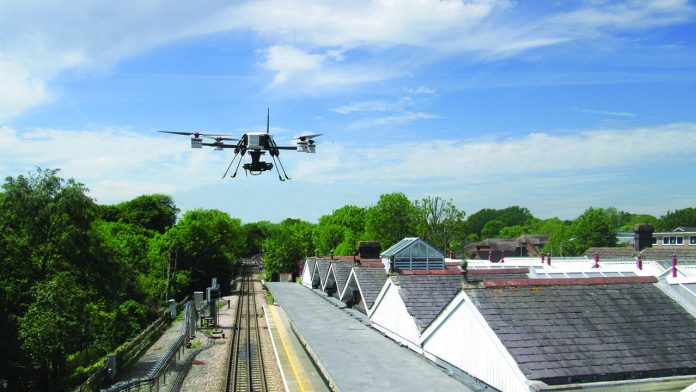Transport for London (TfL) has appointed UK civil engineering firm Lanes Rail to carry out maintenance work on the London Underground network using drones, as their usage in industrial settings increases.
Lanes Rail is responsible for maintaining and repairing a wide range of assets across the London Underground network for TfL, including track drainage, station buildings, bridges, power sites, and engineering works. It is the first contractor to secure a long-term licence for drones, or unmanned unmanned aerial vehicles (UAVs), on TfL properties.
UAVs will improve data gathering, speed up the surveying process, enhance safety, reduce the risk of operational disruption, and cut surveying costs, it said.
Lanes Rail director Matthew Todd said: “Using drones, combined with advanced imaging and analytical technology, will deliver significant benefits for us, for TFL, and for the travelling public in London. We have led the way in trialling the use of drones to survey structures for London Underground. Now we’re the first to obtain formal long-term licence approval for their use from TfL, which opens up exciting opportunities.”
UAVs are an increasingly familiar fixture in industrial maintenance. The European Commission has stumped up €4.72 million via its Horizon 2020 research and innovation programme to develop robot-drones to navigate hard-to-reach oil or gas refineries. It reckons UAVs could save these energy plants up to €700,000 annually in inspection costs.
US operator AT&T has outlined plans for UAV usage to survey and inspect cell towers, also investing in software to help repair tower equipment and carry radios to places where network traffic is heavy. Meanwhile, Finnish vendor Nokia has opened Europe’s first dedicated testing facility for the use of UAVs for traffic management, at Twente Airport in the Netherlands.
The Lanes Rail contract was awarded after a 12-month testing and approval process, said Lanes Rail. The company’s drone survey team, which has a UAV licence from the Civil Aviation Authority, was required to demonstrate electromagnetic compatibility with live rail and signalling systems, as well as procedures to alert transport staff of UAVs in the vicinity.
Todd said: “We had to go through a very detailed and structured process of answering every conceivable what-if question: what if the drone malfunctioned, what if the drone was close to a power line or signalling equipment, what if a member of the public or TfL employee saw the drone flying?
“We had to demonstrate that our drones would be safe to fly within the defined operational envelope set for them, that we were competent to use them, and that we had procedures in place to manage any foreseeable circumstance involving TfL staff and customers.”
Andrew McQueen, head of Lanes Professional Services, said: “As data gathering becomes integrated into ever more sophisticated real-time asset control systems, supported by technologies such as big data analysis and artificial intelligence, drones will really come into their own to improve the quality, safety, and cost-effectiveness of our built environments.”

